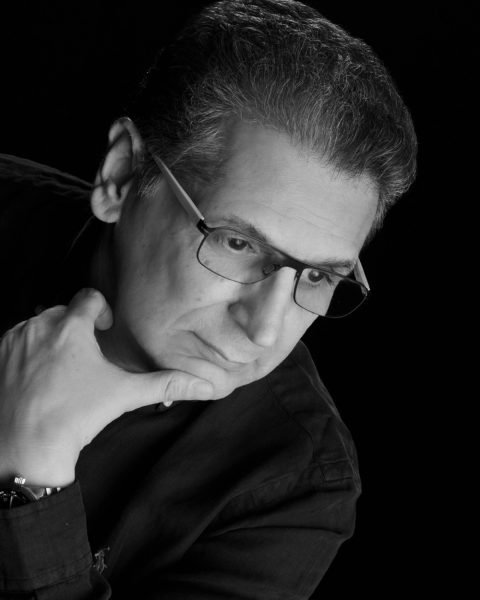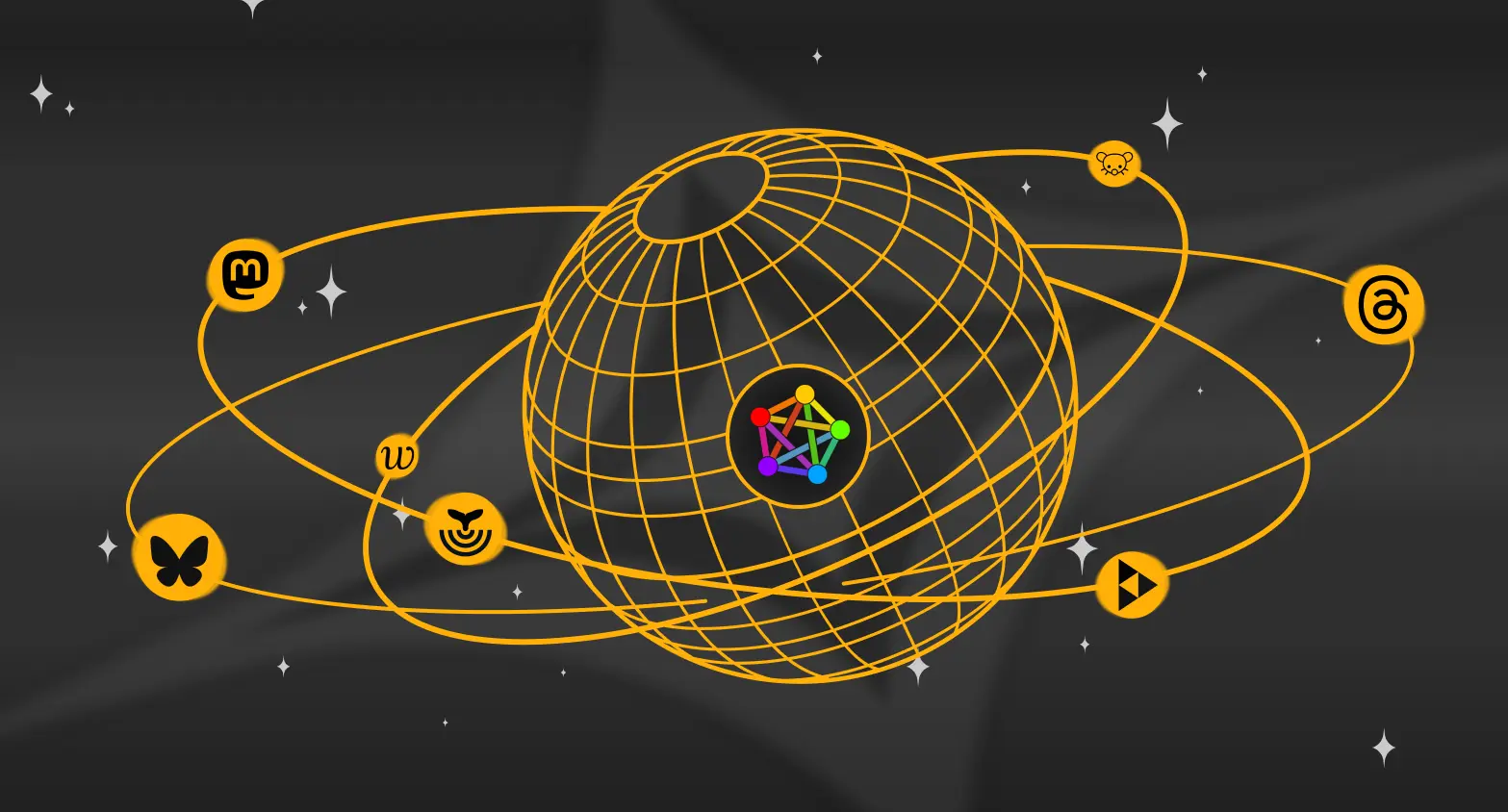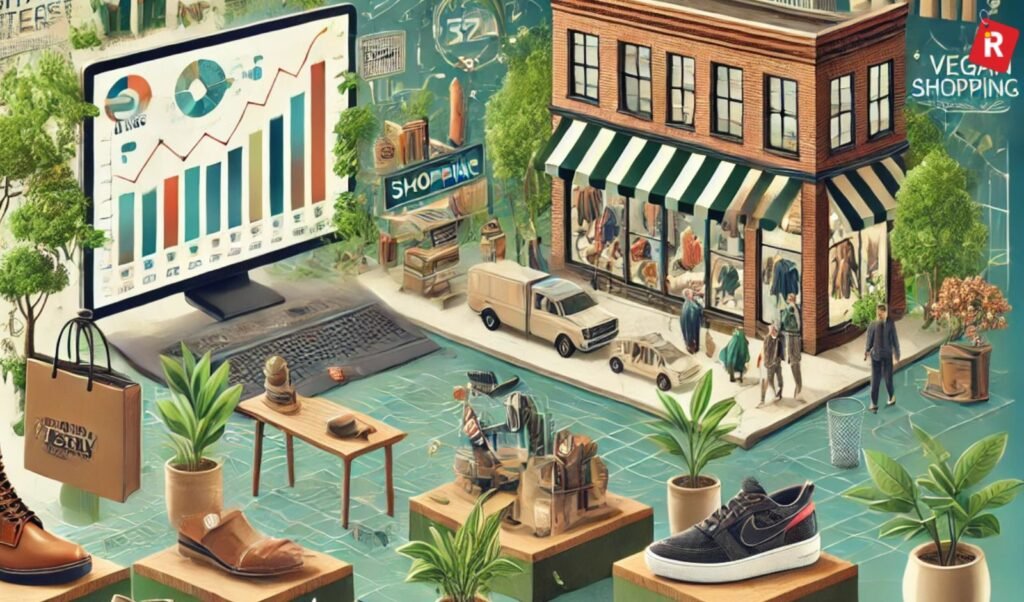Entrepreneurs
Journey from Confusion to Clarity: Finding Direction in a Complex World
Published
9 months agoon

The human mind has been leading us on a roller-coaster ride for thousands of years, trapping us in a cycle of emotions, desires, accumulations, attachments, and selfishness. Corruption, greed, and conflict persist despite efforts to advance humanity through religion, spirituality, and technology, as well as excessive involvement in greed-based practices, which overshadow spiritual values and lead to economic disparities. Wars fuelled by territorial and ideological factors continue, often using religion to justify violence.
Technology we rave about today, besides bringing progress, also fuels wars with advanced destructive weapons for mass killings, disrupting with challenges like cyber warfare. Religious institutions become politicized, while spiritual gurus, workers, and their assistants are more keen to commercialize preachings for name, fame, wealth, and amassing followers. From religious beliefs to spiritual methods like chanting mantras, zen, Tai-chi, transcendental meditation, etc., we have not been able to address the world’s destructive issues as we hope and expect.
We keep collecting higher information from different scientific and spiritual sources without trying to apply them properly. I am sure you will agree that human-created methods have not given us the peace and harmony we seek in today’s turbulent world. We add knowledge without earnestly comprehending, applying it holistically, or dedicatedly. As a result, most human-made methods have been unsuccessful in offering the peace of mind and harmony we desperately seek in today’s chaotic world.
Confusion impacts everyone; we need clarification about what we want from life. Differentiating between truth, lies, and fiction challenges our brains. Religions have brainwashed us so thoroughly that we no longer recognize the actual reality around us. As a result, our sensory organs and subconscious minds stop responding to reality, even when our conscious minds strive to think truthfully and scientifically. To perceive authentic reality or truth, we need to break free from those deep-rooted prejudices created by our society. We need to seek clarity in all we know before believing all the jargon instilled in us by those who consider themselves superior. Until we do this, we will remain confused and continue to spread this to others, just as others have previously confused us.
Our thinking process remains a mess, repetitively brooding, multitasking randomly and recklessly, un-centered and not focused. Spiritual knowledge and its methods also have not mastered our ego-self. I have yet to come across a single person I can vehemently and with conviction agree that they are truly spiritual. Each of us is trying to project our persona to procure name, fame, or wealth, which means that we become overly attached to our identity and all that we have acquired from this material world. None of us are selflessly willing to give up on the oneness that spirituality demands.
It is after we feel mentally weak, depressed, physically ill, experience material loss, or are under fear that we, in desperation, turn to mix religion and spirituality as a means of escape. Both are different subjects, as religion creates divisions, while spiritualism fosters unity. We deceive our minds, presuming we are now spiritual, not knowing the falsity we have landed. The proof of this lies that despite thousands of years of religion and spiritualism, with more and more additions of spiritual, religious, self-help books and life coaches to mentors, we have not made any significant progress in making our world morally, ethically, and spiritually better. Gone are those days of Krishna, Buddha, and Jesus, who sacrificed their lives for the sake and betterment of all. We have failed to evolve and transform from our essential animalistic stature of lust, greed, and contempt to be worthy of being called a conscious human being. Our self-centeredness far overtakes our spiritual awareness. WHY?
When I truthfully look within, even after decades of being submerged in spiritualism, I cannot abolish ego entirely. I still carry that false mask over my actual spiritual being. Animal nature continues to want this and that for my likes and dislikes. Even to date, I am very much attached to my self-identity in body and mind for prominence and outer recognition. If you wish to be spiritual, the only answer is to awaken the third component of our self, the soul lying dormant within. If we consistently self-observe our mind unquestioningly without any justifications or judgments, we shall learn the art of self-awareness with clarity. Through the soul, the spirit spontaneously and intuitively combines with the intellectual cognitive mind, making us aware and conscious of all we perceive. The subjective(soul) and the objective(mind), the abstract and the physical, the active and the contemplative combine their resources with clarity to evolve and transform beyond our narrow outlook of me and mine. Self-observation for the sake of self-awareness is the key to emerging from mental confusion toward clarity with clairvoyance to unlock the secret of sublime life.
Having clarity is essential for a fulfilling life, both personally and professionally. It involves clear perception, defined goals, and decisive action. Seeking clarity through self-knowledge with self-awareness, inwardly asking essential questions, and actively listening without arguing benefits one’s profession, relationships, and well-being, enhancing the quality of life. Clarity is a guiding lighthouse of insight and purpose in a world to see things for what they are, and confidently navigating life depends on this trait, which cuts through all we know. It benefits decisions, goals, and communication in personal and professional realms, essential for mental health and growth.
Seeking and achieving clarity in life requires introspection, efficient processes, knowledge expansion, effective communication, good health, meditation, setting clear goals, and input from others, leading to a more focused and planned existence. Staying mindful of our thoughts, emotions, and actions paves the way for clarity to permeate our lives. By fostering a state of inner calm and alignment, we can navigate challenges with poise and purpose. Embracing clarity invites us to see the underlying truths amidst the noise, guiding us toward a harmonious existence rooted in authenticity and fulfillment. Consistent self-reflection aids in the eradication of internal strife and discord. At each given moment, we can achieve mindfulness through meditative awareness by understanding our true motives and desires and aligning our actions with more profound ideals.
Clarity directs us toward specific activities and helps us develop attainable goals. In a confusing environment, clarity is critical. As a result, we can cut through the noise better and make the decisions that will provide meaning and fulfillment to our lives. Clarity is a way of life that helps us connect with our authentic selves and fulfill our life’s purpose, and it is not merely a mental condition. It takes you toward your inner intuitiveness, intelligence, and cognitive intellect with certainty to determine the truth from your perspective rather than mindlessly following outwardly from the preachings of those you believe to be accurate, lacking empirical evidence.
There are a lot of different schools of thought when it comes to the best ways to reach spiritual development. But one deep thought jumps out: that clarity is the highest kind of mindfulness. We attain genuine understanding and insight from this outlook through simple, unadulterated mental and spiritual clarity rather than intricate ideologies or mystical and mythological encounters. Seeing things for what they are, free from prejudice, anxiety, or wishful thinking, is the essence of clarity. It is the absence of doubt and uncertainty, characterized by a harmony between one’s words and deeds. Aside from being intellectually fulfilling, being in this condition of clear awareness ties us to the underlying facts of our existence, which has a profound spiritual impact.
Many spiritual systems emphasize clarity. Wisdom (prajna) in Hinduism characterizes clarity by intuitive intelligence. Through Vasishta Yoga, one may unite one’s body, mind, soul, and spirit to liberate oneself from illusions, fixations, and distractions and perceive reality as it is. Brahman, the non-dual ultimate reality, can be practiced via introspection and the elimination of ignorance, according to the Indian philosophy of Advaita Vedanta. In this context, it is essential to acknowledge that there is just one absolute reality, which can neither be created nor destroyed – only converted from one relative or subset form to another.
A fundamental component of obtaining clarity is a steadfast dedication to telling the truth, regardless of how unpleasant that may be. We move our attention away from outward sermons and practices to an inner condition of being when we consider clarity as the core of spirituality. This view teaches us to live by our most profound principles, keep our minds open and focused, and seek the truth in everything instead of impulsively or mindlessly believing those we subconsciously presume to be superior and are not. Doing so clarifies your progress and helps create a more peaceful and enlightened world.
Finally, to conclude, I reiterate that clarity in thoughts is supreme and a consequence of spiritual awareness because it is the core of all spiritual routes. The radiance chases away the shadow of ignorance, the insight that directs our steps, and the tranquility that envelops our souls. The path to transcendence begins with the cultivation of clarity, which allows us to accept spirituality for what it is. Clarity is crucial for navigating life, decision-making, and building meaningful relationships. It entails clear perception, effective communication, and aligning actions with values. Simplifying our lives and fostering personal growth comes through reducing mental clutter, practicing mindfulness, and pursuing truth. Embracing clarity demands steady effort and a readiness to confront complexities. Ultimately, clarity brings wisdom and a stronger bond with our true self – the spirit.
Sahil Sachdeva is the CEO of Level Up Holdings, a Personal Branding agency. He creates elite personal brands through social media growth and top tier press features.

You may like
Entrepreneurs
Why Venture capitalists Win Big Even When Most Startups Fail
Published
6 hours agoon
April 23, 2025
Most entrepreneurs obsess over making every move count. Venture capitalists, on the other hand, play a different game, one that most founders fail to understand, let alone master. It’s not about perfection. It’s about probability. And the difference between the two mindsets can mean the difference between scaling and stalling.
I recently ran a social experiment with a class of young entrepreneurs. The rules were simple: take a modest amount of seed money and, within one hour, find a way to turn it into more. There were no boundaries, no safety nets, no step-by-step guides. Just raw hustle and creative thinking. Some pitched jokes for spare change. Others organized quick games for entry fees. One group offered free advice in exchange for tips. It was an entrepreneurial sandbox, and the results were fascinating.
When the clock stopped, most teams had very little to show. A couple broke even. But two groups stood out, they took bold swings, assumed bigger risks, and walked away with 3x returns on what they started with. That’s when it clicked. The exercise wasn’t just a teaching tool. It was a miniature model of how venture capital actually works in the real world.
This is the game VCs play: make 10 bets, expect 8 to fail, 1 to break even, and 1 to return the fund. It’s a high-risk, high-variance model that thrives not on certainty, but on asymmetric upside. And that’s where most entrepreneurs get it wrong, they aim for steady wins, not breakout potential.
The irony? The venture model rewards a different kind of thinking than what most founders are taught. In school, we’re trained to avoid mistakes. In business, we’re told to optimize every decision. But in venture-backed entrepreneurship, the real value lies in finding and betting on outliers. It’s not about how many wins you rack up. It’s about whether one of those wins is big enough to carry the rest.

VCs aren’t just investors. They’re pattern-spotters, probabilistic thinkers, and momentum chasers. They know that startups are inherently messy, pivots happen, products break, markets shift. So rather than demand perfect execution from the beginning, they focus on scale potential. They place their bets on founders who can navigate chaos and evolve, not just those with perfect pitch decks.
This doesn’t mean entrepreneurs should take reckless risks. But it does mean they need to get comfortable with uncertainty. The best founders don’t try to eliminate every risk. They figure out how to price risk, how much uncertainty they’re willing to take on for the potential of a disproportionate reward. That’s a mindset shift most never make.
There’s also a misconception that venture capital is about picking winners. In truth, it’s more about positioning for luck. VCs know they can’t predict who’ll be the next unicorn, so they invest in networks, ecosystems, and talent pools where lightning is more likely to strike. They engineer serendipity, not certainty.
Entrepreneurs can borrow that same philosophy. Instead of obsessing over the perfect product or business plan, they should ask: “What’s the upside here? If this works, how big can it get?” If the answer is small or safe, it’s not a venture-scale idea. It might be a great lifestyle business, and there’s no shame in that, but it likely won’t attract serious capital.
Another key insight venture capitalists understand is power laws. In venture, returns are not evenly distributed. One startup can return more than the rest of the portfolio combined. That’s why VCs don’t mind being wrong 90% of the time, they just need to be very right once.
Founders who internalize this understand that not all decisions carry equal weight. They learn to separate reversible decisions from irreversible ones, and to act fast on the former. They don’t waste months perfecting a website or obsessing over product features. They get to market, gather feedback, iterate, and position themselves for that one explosive opportunity.
This way of thinking also changes how entrepreneurs should evaluate their own progress. Most early-stage startups look like failures from the outside. Revenue is sporadic, growth is uneven, and the future is murky. But to a seasoned VC, what matters is velocity, not where you are, but how fast you’re learning and evolving. If you’re moving quickly through iterations and proving that your insight is gaining traction, you’re on the right path.
In other words, venture capital isn’t about betting on what is. It’s about betting on what could be, and who has the conviction to chase that future, despite the noise. That’s a hard mindset to teach, but an invaluable one to adopt.
Level Up Insight:
Want to think like a venture capitalist? Stop aiming for guaranteed wins. Instead, learn to bet on high-upside moves, position yourself for unexpected opportunities, and build with the assumption that not everything needs to work, just the right thing. The best entrepreneurs aren’t playing a perfect game. They’re playing the right game.
Entrepreneurs
Smarter Tech Is Quietly Revolutionizing U.S. Healthcare Access
Published
2 days agoon
April 21, 2025
In many parts of the country, accessing public healthcare used to feel like an uphill battle. Mountains of paperwork, outdated phone systems, and long wait times made the process frustrating for millions of Americans. But beneath the surface, a quiet digital revolution is beginning to transform how public health services operate—and more importantly, how people experience them. This isn’t about billion-dollar apps or tech giants swooping in to “disrupt” the system. It’s about real, measurable improvements through smarter, more human-focused technology.
For years, public health infrastructure lagged behind the private sector in terms of digital transformation. Clunky portals and analog systems made it difficult for people—especially in low-income and rural communities—to get the support they needed. But now, change is happening in the places where it matters most. Governments are investing in more intuitive digital platforms, multilingual support tools, mobile-first access, and automated back-end systems designed to streamline everything from Medicaid enrollment to appointment scheduling.
One of the most impactful upgrades has been in eligibility and application processing. Before, someone trying to qualify for public assistance might have to submit multiple documents, wait weeks for review, and potentially start all over if there was a mistake. Today, smart automation can process applications in real time, identify missing information, and guide users through the process with simple prompts. For someone living paycheck to paycheck or managing chronic illness, that time saved can be the difference between hope and hardship.
Smarter technology isn’t just about efficiency—it’s about dignity. Public healthcare is often used by those at their most vulnerable. Whether it’s a single mother seeking prenatal care, a disabled veteran applying for support, or a recently unemployed worker navigating an unexpected crisis, the ability to receive help without shame or confusion is priceless. And when systems work—when they’re seamless, supportive, and respectful—it restores faith in the very institutions designed to protect and serve.

A major factor driving this progress is the rise of digital equity as a design principle. It’s not enough to build sleek platforms. These systems must be accessible to people with limited digital literacy, those without regular internet access, and users who speak different languages. Many platforms now offer audio instructions, adaptive interfaces, and human help via chat or call—ensuring no one is left behind just because they don’t speak tech.
There’s also a growing awareness around the user experience in public systems. For years, governments designed platforms from the inside out—what made sense to agencies, not necessarily to citizens. Now, we’re seeing a shift. User-centered design, empathy mapping, and behavioral research are informing new builds. And it’s paying off. Residents are spending less time on applications. Caseworkers are reporting fewer errors. Agencies are saving resources and redirecting staff toward high-value tasks.
Cybersecurity has also become a top priority. As more sensitive health and financial information moves online, protecting it becomes non-negotiable. Agencies are investing in end-to-end encryption, multi-factor authentication, and comprehensive training for staff. What was once an afterthought is now foundational, especially as trust becomes a critical metric of system success.
Another quiet benefit: better data. As systems digitize, they also become more intelligent. Agencies can track where people drop off during applications, which regions face bottlenecks, or what populations remain underserved. These insights are being used not just to improve operations, but to influence policy. Instead of relying solely on outdated surveys or fragmented reports, officials now have real-time dashboards to monitor outcomes and course-correct quickly.
This healthtech transformation is creating a blueprint for how government can evolve—one that doesn’t rely on flashy launches but on steady, thoughtful improvements. Many of the best ideas are coming from people inside the system—policy veterans, community organizers, and civil servants who’ve seen what doesn’t work. These are the builders reshaping the infrastructure of care with empathy and pragmatism.
For instance, in several U.S. states, pilot programs have introduced mobile clinics paired with real-time digital intake forms. This not only brings healthcare physically closer to remote populations but ensures their information is logged instantly, securely, and without duplication. Other initiatives have integrated health systems with social services, so families applying for healthcare can simultaneously access food aid or housing support—without re-entering their information five times over.
And then there’s the role of artificial intelligence—not to replace healthcare workers, but to support them. AI-powered virtual assistants are being used to answer FAQs, guide people through applications, and even flag complex cases for human review. By handling routine interactions, these tools free up social workers and healthcare professionals to focus on high-touch, sensitive issues where empathy matters most.
But success isn’t guaranteed. Funding gaps, political shifts, and outdated procurement systems can stall progress. The digital divide remains a persistent challenge. Some states are moving faster than others. But the momentum is clear—and the results are impossible to ignore. When public healthcare becomes easier to use, more people use it. That means earlier diagnosis, better preventative care, and ultimately, lower costs for everyone.
There’s also a cultural shift taking place. Public healthcare workers are being trained not just in how to use these new systems—but why they matter. When staff understand that smarter tech helps them serve with more compassion and efficiency, adoption increases. It’s not about replacing the human touch; it’s about reinforcing it with systems that actually work.
As the U.S. continues to modernize its public infrastructure, healthcare stands out as both the most critical and most promising frontier. We often talk about healthcare innovation in terms of futuristic devices or AI breakthroughs. But perhaps the real revolution is simpler—and more powerful. It’s giving people the ability to get help when they need it, without jumping through hoops. It’s turning pain points into seamless experiences. It’s tech that doesn’t brag—but works.
Level Up Insight:
The next wave of public healthcare innovation won’t come from glossy apps or viral campaigns—it will come from infrastructure that just works. Systems that put people first, that empower the underserved, and that quietly, steadily, make healthcare more humane. The smartest tech doesn’t just make things faster—it makes them fairer. And in this new era, empathy is the ultimate upgrade.
Entrepreneurs
The Entrepreneurial Movement Reimagining College as a Community
Published
6 days agoon
April 17, 2025
Higher education in America is quietly unraveling. Declining enrollment. Crippling student debt. Empty dorms. Outdated curriculums. It’s not a blip — it’s a breakdown. What used to be a guaranteed launchpad for opportunity has become, for many, a financially draining, emotionally isolating, and culturally out-of-touch system. And while university boards debate reform in committee rooms, a new wave of founders is stepping in to rebuild what academia has lost — community.
Startups, not senators, are leading the most important higher education revolution of our time. Not by overhauling curriculum, but by solving the root problem: students don’t feel connected anymore — not to each other, not to their institutions, and definitely not to their futures.
At the center of this shift is a rising breed of social entrepreneurs who see colleges not as ivory towers, but as under-leveraged ecosystems. They’re treating the campus like a startup incubator: something that needs community, product-market fit, and a mission that resonates. And it’s working.

The Opportunity in Disconnection
Gen-Z students aren’t just dropping out of school — they’re dropping out of belonging. Social isolation, a lack of purpose, and transactional education models have hollowed out the college experience. Traditional universities, built for scalability not intimacy, weren’t designed to address this. Enter: a new generation of community-focused tech founders who believe the next unicorn might not come from Silicon Valley — but from saving the campus experience.
These startups aren’t replacing professors or rewriting textbooks. They’re rebuilding connection. And in doing so, they’re solving what might be higher education’s most critical problem: relevance.
Roshi: The Startup Treating Belonging as a Product
Roshi, one of the leaders in this space, started with a deceptively simple mission: make it easier for students to find each other. But that small fix grew into a platform that now connects students with alumni, mentors, local businesses, community service opportunities, and even therapy resources — all through a single, campus-integrated app.
Founder-led and bootstrapped in its early days, Roshi’s growth came not from ad budgets but from network effect — students were hungry for a campus experience that felt more human. The platform’s core insight? Colleges have all the right people — they just don’t have the infrastructure to help them meet.
Instead of trying to fix universities from the top down, Roshi is hacking the community layer from the bottom up. And they’re not alone.
A New Class of Founders
Across the U.S., a surge of mission-driven startups is tackling the “experience gap” in higher education:
-
Tools that map invisible alumni networks and activate mentorship.
-
Apps that turn dorms into co-living communities, not just shared housing.
-
Marketplaces connecting students with real-time local internships and gigs.
-
Peer support platforms that bypass outdated counseling offices.
These aren’t edtech 1.0 tools trying to digitize syllabi. They’re experience design companies, created by entrepreneurs who understand that belonging is infrastructure — and scalable.
And their investors? Increasingly, they’re VCs focused not on “education tech” but on human outcomes. Because mental health, retention, and engagement are now measurable business KPIs, not soft metrics.
Why Founders Have the Edge
Universities move slow. Founders move fast. That’s why entrepreneurs are the only ones agile enough to build for the emotional and psychological needs of today’s students — and monetize it ethically. They’re unbundling the college experience, repackaging its most meaningful elements, and making them modular, inclusive, and community-first.
They also know something higher ed hasn’t internalized: today’s students are not just learners — they’re customers, creators, and future builders. Treat them like passive recipients and you’ll lose them. Engage them like co-founders of their own journey, and you’ll gain a lifelong community.
The Future of College Will Be Built, Not Taught
The idea that higher education needs to be saved by its own institutions is outdated. The institutions are the problem. The saviors are the startups. Not because they’re smarter, but because they’re listening. To students. To dropouts. To the under-engaged and the over-leveraged.
The next big education breakthrough won’t come from a research grant — it’ll come from a founder who treats campus connection like a business model. Who sees culture as a product. Who understands that belonging is the real tuition students are willing to pay.
And for the entrepreneurs building this future? The question isn’t whether college is dying. It’s whether they can rebuild it before it collapses entirely.
Level Up Insight
The future of higher education isn’t in bigger buildings or more degrees — it’s in tighter communities and founder-led innovation. Entrepreneurs who understand the emotional economy of college life are seizing a once-in-a-generation opportunity: not just to disrupt education, but to rehumanize it.
Entrepreneurs
Designing Well: How One Architect Boosts American Business
Published
1 week agoon
April 16, 2025
The spaces we inhabit profoundly shape our well-being, particularly the offices where many spend the majority of their days. Research highlights that a truly healthy building fosters the physical, mental, and social health of its occupants, creating an environment where they feel secure, comfortable, and ultimately more effective.
Yet, the reality is that many structures fall short. The term “sick building syndrome” emerged to describe the array of health and comfort issues experienced by those within certain buildings, often linked to factors like poor air quality, inadequate ventilation, and even the psychological impact of the environment. Suboptimal lighting, acoustics, and poorly designed workspaces can contribute to a cascade of problems, from headaches and fatigue to more significant health concerns and shifts in mood.
Fortunately, a new wave of architects and designers is stepping forward, championing solutions that prioritize both the wellness and the productivity of those who use these spaces. When human health is at the forefront of design, the benefits resonate throughout the entire ecosystem.
One such visionary is Manuel Granja, an architect dedicated to sustainable design solutions for fitness and wellness environments, driven by a commitment to improving public health across America. His mission centers on weaving together human-focused design strategies, cutting-edge environmental systems, and data-informed architecture to conceive innovative fitness and wellness facilities that naturally encourage physical activity and nurture mental well-being.

Directly tackling the nation’s growing health challenges, Manuel aims to mitigate issues like hypertension, diabetes, and mental health disorders by crafting spaces that inherently promote healthier lifestyles. The ultimate ambition? To lower healthcare costs and strengthen the overall welfare of communities.
Having collaborated with major global entities on the design of wellness-centric spaces, Manuel is now launching his own firm, focusing on the revitalization of existing commercial spaces, with a particular emphasis on interior design to minimize environmental impact. His vision extends to advocating for a deeper integration of wellness into everyday culture, encompassing practices that foster consistent exercise habits and even infrastructure that supports active modes of transportation.
“My broad perspective, gained through involvement in various sports and extensive professional experience internationally, has provided me with unique insights into what motivates exercise and the disparities in public health,” Manuel explains. “I’ve witnessed firsthand how socioeconomic factors and cultural nuances influence fitness behaviors and public health outcomes. This experience has solidified my belief that wellness solutions must be deeply rooted in individual and cultural needs, acknowledging that while culture evolves, its initial influence is paramount.”
To this end, Manuel empowers his clients by conducting thorough market research tailored to the specific communities where their ventures will operate. This focus ensures sustainable operations and minimizes unnecessary overhead, ultimately supporting the core goal: improved health outcomes nationwide.
American culture often celebrates relentless activity, sometimes overshadowing the vital importance of preserving energy and prioritizing mental and physical health. Manuel believes that forward-thinking leaders should provide accessible resources for their teams to de-stress and care for themselves, recognizing that this investment directly translates to enhanced performance.
“For leaders and entrepreneurs striving to cultivate high-performing teams, my design philosophy prioritizes maximizing exercise adherence through minimal effort, a strategy grounded in behavioral science, an approach that yields tangible benefits. By strategically investing in amenities inspired by leading wellness and sustainability standards, businesses can significantly influence occupant behavior and improve public health, positioning themselves as pioneers in employee well-being,” Manuel states.
He continues, “Furthermore, envisioning commercial fitness facilities as vibrant social hubs, similar to popular dining establishments, creates engaging experiences that cultivate community and sustained involvement. This model not only elevates team morale but also provides a competitive edge by attracting and retaining top talent.”
For businesses within the fitness industry, it’s crucial to consider how their offerings can distinguish themselves in an increasingly crowded market. For businesses outside the fitness sector, integrating a straightforward yet impactful wellness program offers a direct route to enhanced productivity levels and reduced employee turnover. In an era where workplace culture and public health are more interconnected than ever before, investing in wellness isn’t just a benefit for employees; it’s a strategic advantage for business success.
LevelUp Insight:
Manuel Granja’s approach highlights a fundamental shift in how we view the built environment. It’s no longer just about aesthetics or functionality; it’s about actively designing spaces that contribute to human well-being and, consequently, drive business success.
For LevelUp readers, this underscores the powerful intersection of design, health, and productivity. Investing in wellness-centric design isn’t a fringe benefit; it’s a strategic imperative for businesses seeking to cultivate thriving teams, attract top talent, and ultimately achieve sustainable growth. The “level up” here lies in recognizing that the spaces we create have a direct impact on human potential, and by prioritizing well-being in design, we unlock a powerful engine for individual and collective success.

The internet, as we know it, is undergoing a seismic shift. Control is fracturing, power is being redistributed, and a new era of digital interaction is dawning. Forget centralized giants dictating terms; the future belongs to the decentralized web – Web3. This isn’t just tech jargon; it’s a fundamental reimagining of how we connect, transact, and own our digital lives. For entrepreneurs and innovators, this revolution isn’t just fascinating – it’s fertile ground for groundbreaking ventures, a landscape brimming with untapped potential waiting to be unlocked.
Unlocking New Frontiers with Blockchain:
At the heart of Web3 lies blockchain technology, the immutable and transparent ledger that forms the bedrock of decentralized finance (DeFi), Non-Fungible Tokens (NFTs), and decentralized applications (dApps). DeFi is dismantling traditional financial gatekeepers, offering peer-to-peer lending, borrowing, and trading with unprecedented transparency and accessibility. Imagine a financial system where you have direct control over your assets, free from the often opaque and sometimes restrictive practices of established institutions. This is the core promise DeFi is rapidly delivering, empowering individuals with greater financial autonomy.
NFTs, moving far beyond the initial hype surrounding digital art, are establishing true digital ownership in a way never before possible. From unique in-game assets that players truly own and can trade freely, to verifiable digital identities that grant individuals control over their online presence, and even the fractional ownership of tangible real-world assets, NFTs are creating entirely new digital economies and empowering creators across various fields in ways never before imagined. Artists can connect directly with their global audience, musicians can monetize their work without the need for traditional intermediaries, and collectors can truly own and showcase unique digital experiences, fostering a new era of digital patronage.
Then there are dApps – applications built on decentralized networks, inherently resistant to censorship and the vulnerabilities associated with single points of failure. These range from decentralized social media platforms where users have greater control over their data and content moderation policies, to innovative decentralized autonomous organizations (DAOs) that allow communities to govern themselves transparently, and a myriad of other applications disrupting traditional industries. The potential for fundamental disruption across virtually every sector is immense, offering entrepreneurs the chance to build truly user-centric, resilient, and transparent solutions that prioritize community needs over centralized control.

Venturing into the Metaverse:
The Metaverse, often envisioned as a network of interconnected immersive virtual and augmented reality environments, is another crucial and rapidly evolving pillar of Web3. While still in its relatively early stages of development, it presents a vast and largely uncharted territory for entrepreneurial creativity and innovation. Imagine virtual marketplaces powered by secure blockchain transactions, digital events where ownership of unique virtual goods and experiences is immutably secured by NFTs, and immersive social and professional interactions that increasingly blur the traditional lines between the physical and digital realms.
Early-stage ventures are already boldly exploring these nascent opportunities, building virtual real estate platforms where digital land can be owned and developed, creating interactive and engaging gaming experiences with true digital ownership of in-game assets, and developing essential tools and infrastructure for seamless interaction, communication, and commerce within these increasingly sophisticated virtual worlds. The Metaverse is not simply about escapism or entertainment; it’s rapidly evolving into a new frontier for commerce, social interaction, education, and even professional collaboration, offering entrepreneurs the chance to define the rules and build the foundational elements of this emerging digital landscape.
Reclaiming Digital Sovereignty:
A fundamental and increasingly important core tenet of Web3 is its strong emphasis on individual data ownership and privacy. In a digital world where personal data has become an incredibly valuable commodity, often collected, analyzed, and monetized by centralized entities with limited user control or transparency, Web3 offers a compelling and much-needed paradigm shift. Decentralized data storage solutions that put users in control of their information, privacy-preserving cryptographic technologies that allow for secure and anonymous interactions, and user-centric data management tools are gaining significant traction and user demand.
Entrepreneurs are responding to this growing need by building innovative businesses that empower individuals to truly own and control their digital footprint, offering secure and private communication platforms that minimize data collection, and developing essential tools that allow users to interact with the digital world without constantly sacrificing their fundamental right to privacy. This increasing societal demand for digital sovereignty presents a significant and timely opportunity for innovative solutions that fundamentally prioritize user rights and reshape the power dynamics of the internet.
Level Up Insights :
The decentralized web is not a futuristic fantasy confined to science fiction; it’s a rapidly evolving reality that is already reshaping the digital landscape. For ambitious individuals looking to build the next generation of truly impactful and transformative businesses, a deep understanding and proactive embrace of the core principles of Web3 is no longer merely an option – it is an absolute essential. The burgeoning opportunities within DeFi, NFTs, decentralized applications, the Metaverse, and the crucial realm of data privacy are vast, largely untapped, and ripe for creative and innovative exploration. Now is the time to level up your understanding of this revolutionary technology and actively explore how you can become a key architect of this transformative digital revolution. The future of the internet is undeniably decentralized, and the power to shape its trajectory lies firmly in the hands of today’s visionary and forward-thinking entrepreneurs. The game is changing, and those who understand the new rules will be the ones to truly level up.
Entrepreneurs
From Hustle to Holding Companies: The New Face of U.S. Entrepreneurship
Published
1 week agoon
April 14, 2025
Not every entrepreneur in 2025 wants to build the next unicorn companies. Some just want to own five boring, profitable businesses and be left alone. Quietly, steadily, and across every major U.S. city, a new kind of founder is emerging—one less obsessed with pitch decks and more focused on monthly cash flow. The dream? Not a flashy exit, but a sustainable empire. And it’s being built through an old-school, newly popular model: the holding company.
This isn’t the VC-fueled founder narrative we’re used to. There are no champagne-popping IPOs or billion-dollar valuations here. Instead, think laundromats, HVAC companies, niche SaaS, mobile car detailing—run under one umbrella, stacked for synergy, and optimized for income. These are America’s new-age holding entrepreneurs, and they’re quietly rewriting what modern success looks like.
For many, the shift began post-pandemic. The startup grind no longer looked glamorous—it looked exhausting. Burnout was high. Profits were low. Founders who once chased scale at any cost began to ask a different question: What if I just owned multiple small, profitable businesses instead of chasing one big risky one?
That shift in mindset created a wave. Twitter threads, YouTube channels, and bootstrapped founders started sharing real numbers. $20K/month from a local pest control business. $10K/month from a no-code app. $40K/month from a niche B2B service company. When bundled under one LLC with lean teams and strong ops, the result was wealth without noise.

From Hustle to Holding Companies: The New Face of U.S. Entrepreneurshipmeeting and discussing new business project ideas in an office – startup business concept
Platforms like Acquire.com, BizBuySell, and even local Facebook groups became treasure maps for acquisition-minded entrepreneurs. Instead of building from zero, smart solopreneurs and ex-startup folks started buying businesses with stable revenues and plugging them into a centralized infrastructure—marketing, ops, finance. One person, or a tiny team, controlling five income streams. Low ego. High ROI.
What’s wild is that this isn’t new—it’s just newly cool. Holding companies have been around forever. Berkshire Hathaway is one. So is IAC. But today’s founders aren’t aiming to be Warren Buffett. They’re aiming to own five $1M businesses instead of building one $100M rocketship that might crash.
There’s also a lifestyle play here. These founders aren’t glued to investor calls or trapped in toxic hustle loops. They’re designing lives where work fits around freedom. Some live in Austin or Miami. Others travel full-time, managing remotely. What binds them isn’t geography—it’s structure. Systems-first thinking. Delegation. Obsession with playbooks.
And let’s not forget the rise of micro private equity. These small-scale firms, sometimes just 2–3 partners, are scooping up service businesses under $5M in annual revenue. With cash, SOPs, and operator talent, they’re flipping or holding for cash flow. It’s Shark Tank without the cameras.
In 2025, entrepreneurship isn’t just about disruption. It’s about ownership. Founders aren’t just building—they’re collecting. Collecting businesses. Collecting control. And often, collecting equity across industries in ways traditional startup playbooks never taught.
The new entrepreneur isn’t loud. They don’t need to be. Their Stripe accounts speak louder than LinkedIn posts.
But this model isn’t without its challenges. Managing five businesses—even “boring” ones—requires operational discipline. Hiring right. Delegating ruthlessly. Keeping culture intact across different verticals. When done right, it’s freedom. When done wrong, it’s chaos at scale.
Still, the rewards are massive. Monthly recurring income. Real estate plays. Brand consolidation. Optionality. And perhaps most valuable—peace of mind. You’re not betting the farm on one risky idea. You’re stacking small wins until they look like a dynasty.
Level Up Insight:
In a world obsessed with scale and virality, the smartest entrepreneurs in 2025 are playing a different game. They’re not chasing hype—they’re buying cash flow. They don’t want to be the face of a unicorn. They want to be the invisible force behind five thriving companies. Less pitch. More power. Welcome to the age of entrepreneurial holding.
Entrepreneurs
The Rise of Polyworking: Why America’s New Entrepreneurs Don’t Want Just One Job Anymore
Published
2 weeks agoon
April 11, 2025
In the America of 2025, careers are starting to look less like ladders and more like spider webs. The old model was simple — study hard, get a degree, land a 9-to-5 job, and stay loyal to one company or one profession. But step into today’s entrepreneurial circles, and you’ll hear a completely different language. People proudly introduce themselves as a writer-developer, or a designer-strategist, or a marketer-podcaster-investor-creator — all in one breath.
This is the new age of polyworking — a work culture where having multiple careers, income streams, or professional identities isn’t seen as a distraction. It’s seen as an advantage. And it’s catching fire across America like never before.
Why Polyworking Feels Like America’s Next Big Workforce Revolution
Polyworking is not freelancing 2.0 or side hustle culture on steroids. It’s a complete mindset shift about how smart Americans are designing their careers post-pandemic. A new generation of entrepreneurs — especially Millennials and Gen Z — are no longer comfortable betting their entire life and income on a single role, a single company, or a single industry.
Economic uncertainty, layoffs, inflation, AI disruption, and the rise of remote work have all pushed Americans to rethink stability. And the answer isn’t always chasing bigger paychecks from bigger companies. It’s creating your own ecosystem of small income streams that together give you more freedom, flexibility, and control than any traditional job ever could.
The Typical Polyworker In America Today Doesn’t Look How You’d Expect
Forget the image of a 9-to-5 employee quietly running an Etsy shop on weekends. Polyworking in 2025 looks different. It’s people like:
→ A UX designer who runs a YouTube channel teaching design basics.
→ A marketing consultant who also ghostwrites LinkedIn content for CEOs.
→ A fitness coach who manages paid communities online while running local bootcamps.
→ A copywriter selling digital products on Gumroad, while building a newsletter audience on Substack.
→ A photographer who builds Notion templates and licenses stock videos on the side.
These aren’t hobbies anymore. They’re micro-businesses within a personal brand empire.

What’s Driving America’s Shift Toward Polyworking
The reasons behind this rise are real, practical, and deeply emotional. Americans are polyworking because:
→ Job security feels like an illusion after back-to-back economic downturns.
→ AI is eating repetitive jobs faster than companies can replace them.
→ Passive income from digital products is finally realistic at scale.
→ Platforms like Gumroad, Etsy, Substack, and Patreon made monetization frictionless.
→ Building a personal brand means opportunity now comes directly to individuals, not resumes.
→ And most importantly — people want to own their time.
In 2025, freedom is the new luxury.
Tools & Platforms Fueling The Polywork Boom
America’s polyworkers don’t just hustle harder — they build smarter. Their world runs on tools like:
→ Notion for project management across roles.
→ Calendly for managing client bookings.
→ Gumroad & Substack for monetizing knowledge.
→ Canva for content creation at scale.
→ AI tools like ChatGPT for faster output.
→ LinkedIn, TikTok, and Instagram for inbound client generation.
Technology didn’t just enable polyworking. It normalized it.
The Challenges Nobody Talks About
Of course, having multiple income streams comes with multiple problems. Time management becomes a survival skill. Switching between roles daily can feel chaotic. Financial planning is tricky when income is non-linear. Burnout is a real risk if boundaries aren’t clear.
But most polyworkers believe these are good problems to have. Because unlike the old system where one layoff could wipe you out overnight, polyworking gives resilience. If one income stream slows down, five others keep you afloat.
It’s diversified living.
How The American Employer Mindset is Changing Too
What’s even more interesting? Big companies in America are slowly catching up to this culture. Employers are hiring people not for one skill — but for their range.
A marketer who can also write copy. A designer who understands content strategy. A salesperson who can build community online.
The multi-skilled professional isn’t seen as unfocused anymore. They’re seen as future-proof.
In fact, America’s next great entrepreneurs might not be starting unicorn startups — they might just be running four small, profitable online projects that together pay better, feel better, and work better than any VC-funded rollercoaster ride.
Level Up Insight: In 2025, Playing Safe Looks Very Different
The riskiest thing you can do today is depend on one skill, one job, or one company.
The smartest entrepreneurs in America right now aren’t diversifying investments. They’re diversifying themselves.
If the last decade was about personal branding — this decade is about personal scaling.
Your skill stack is your safety net. Your content is your inbound lead machine. Your multiple roles aren’t confusing — they’re your career armor.
Polyworking isn’t just a trend. It’s the American dream — version upgraded.
Business
Meet the Mom Redefining Luxury Diaper Bags: Label The Muse Founder Saïka Bince Is Turning Motherhood Into a Fashion Statement
Published
2 weeks agoon
April 11, 2025
When Saïka Bince caught a glimpse of herself in the mirror while packing a diaper bag one morning, she didn’t just see a tired mom—she saw a muse gone missing. That fleeting moment sparked a quiet revolution. What began as an identity crisis bloomed into a couture movement. Today, she is the founder of Label The Muse, a luxury fashion brand out of Atlanta that’s transforming motherhood into a main-character moment.
Label The Muse isn’t just about handbags—it’s about visibility. Power. Presence. It’s about telling mothers: “You can carry bottles and still carry the room.” With signature pieces like the Bince Bag, a handcrafted marvel that takes over 80 hours to create, this designer diaper bag brand blends form and function into a love language that speaks directly to women who refuse to choose between elegance and everyday reality.
A Muse Born of Many Names
For Saïka, a first-generation Haitian American and mother, fashion has always been about legacy. Each bag in the Label The Muse collection is named after a matriarch in her family: Kesner (her grandmother), Ti Nette (her mother), and Bince (herself). These names aren’t just titles—they’re tributes. Embroidered into the brand’s DNA is a generational celebration of womanhood, sacrifice, and strength. These handbags are heirlooms in the making, designed not only to carry the essentials of motherhood but also its emotional lineage.
From Beauty to Boldness: The Journey of a Self-Taught Designer
Before founding Label The Muse, Saïka spent nearly a decade immersed in the beauty industry, where she created a makeup brand rooted in self-expression and personal transformation. Motherhood didn’t merely change her path—it expanded it. Feeling the tension between function and fashion, Saïka began sketching and sourcing materials with a clear vision: to create a diaper bag that didn’t erase her identity but elevated it.
She taught herself how to sew from scratch. Every stitch, clasp, and curve of her designs became a deliberate offering to the modern muse navigating nap schedules and personal ambition in the same breath.
The Bince Bag: Where Function Meets Fashion
Luxury diaper bags. Designer diaper bags. Vegan leather handbags. Label The Muse delivers all three and more. Each piece is constructed from bold, standout vegan leather and finished with soft gold-painted stainless steel hardware. Inside? Thoughtfully engineered compartments for diapers, electronics, bottles (double-insulated, of course), and even waterproof linings. Outside? Bold textures, artistic silhouettes, and couture-caliber polish.
This is what sets Label The Muse apart: They don’t design for “motherhood.” They are designed for mothers.
Legacy in Every Loop
More than a business, Label The Muse is a living archive—a fashion house preserving the elegance of Black motherhood, amplifying its voice, and redefining its aesthetic. Saïka is building an empire where beauty and burden aren’t at odds, but co-exist in every bag she creates. For her, being a mother didn’t mean losing herself. It meant expanding. Becoming not less—but more. The woman. The nurturer. The creative. The leader. The muse.
“Identity isn’t either/or—it’s and,” she says. “When you embrace every part of who you are, you don’t shrink. You become legacy.”
The Future Is Fashioned by Mothers
While the fashion world has long treated motherhood as an afterthought in fashion, Saïka sees it as a centerpiece. Her vision? A runway where baby bumps wear silk. Campaigns where softness is seen as a strength. Fashion houses that finally honor the women doing the most sacred work: creating life while staying entirely themselves.
And Label The Muse is just the beginning.
You can explore the full collection and learn more about the story behind Label The Muse by visiting the official website at www.labelthemuse.com.
Entrepreneurs
The New Hustle Culture: Why America’s Gen-Z Is Choosing Freedom Over Fortune
Published
2 weeks agoon
April 10, 2025
In today’s America, success looks nothing like it used to. Gone are the days when having a corner office or a six-figure salary defined someone’s worth. For Gen-Z — the most fearless, digital-first generation in history — success isn’t measured by money alone.It’s measured by freedom.
Across the country, a quiet but powerful shift is happening. Gen-Z is rejecting the traditional 9-to-5 grind and corporate ladder dreams. Instead, they’re choosing side hustles, remote work, creator economy gigs, and small passion-led businesses. Not because they’re lazy. But because they value living on their own terms more than anything else.
Welcome to America’s new hustle culture — not about burnout, but about balance.
This generation grew up watching their parents sacrifice happiness for job security. They saw burnout glorified and corporate loyalty often go unrewarded. The pandemic only accelerated this mindset shift. For Gen-Z, control over time, mental peace, and creative freedom matter more than paychecks with golden handcuffs.That’s why across cities like Austin, Miami, New York, and even small towns — young Americans are building unconventional careers. They are launching Etsy stores, monetizing their TikTok following, selling digital products, offering freelance services, and building personal brands from their bedrooms.
And they’re thriving.

It’s no longer rare to see a 22-year-old running a profitable online store or a 19-year-old making thousands teaching a skill on social media. This isn’t just about quitting jobs. It’s about creating a life where work fits into their lifestyle — not the other way around. This new hustle culture is rooted in independence. But make no mistake — hustling today doesn’t mean working 24/7. Gen-Z isn’t romanticizing burnout. They’re building smarter, not harder.
They leverage tech, automation, remote teams, and passive income streams to work efficiently. And perhaps most importantly — they set boundaries. They prioritize rest as much as revenue. This is America’s fresh take on ambition. Another key reason for this shift is access.
Tools that were once expensive or difficult to learn are now widely available. Platforms like Shopify, Canva, TikTok, and Substack have lowered entry barriers. Anyone with a smartphone and an idea can start earning.
Gen-Z knows this better than anyone.
They’re not waiting for permission. They’re not waiting to climb the ladder. They’re building their own ladders.
Freedom-first entrepreneurship isn’t just a trend — it’s becoming America’s new economy. More and more young founders are choosing to stay small, profitable, and independent instead of chasing VC money or massive scale.Because for them, happiness isn’t about managing 200 employees. It’s about managing their own time.
Look around and you’ll see it everywhere.
- A content creator teaching Instagram growth.
- A designer selling Notion templates.
- A fitness coach building an online community.
- A writer monetizing a newsletter.
- A drop-shipper building niche e-commerce stores.
This isn’t just hustle. This is lifestyle design.
Of course, the journey isn’t perfect. Choosing freedom comes with challenges — unstable income, loneliness, managing multiple roles, and the pressure of always staying relevant online. But Gen-Z accepts these challenges in exchange for autonomy. They’re not obsessed with retirement dreams. They want a life they don’t need a vacation from — right now. This shift is forcing even traditional companies to evolve. Brands trying to hire Gen-Z talent know they need to offer remote flexibility, mental health support, side hustle acceptance, and growth opportunities beyond salary.
Because if not — Gen-Z will happily build their own thing.
America’s hustle culture has transformed from a burnout badge to a freedom badge. Young entrepreneurs are redefining wealth as experiences, flexibility, and peace of mind. It’s no longer about just chasing dollars.
It’s about chasing days filled with meaning.
Level Up Insight:
“America’s new hustle culture isn’t about working more. It’s about working smart, working free, and building a life that feels like yours. Gen-Z isn’t waiting for opportunity. They’re creating it — one side hustle, one personal brand, and one bold step at a time.”
Entrepreneurs
The American Franchise Gold Rush: Why Everyone Wants Passive Income Now
Published
2 weeks agoon
April 9, 2025
There’s a strange new obsession sweeping across America — and it’s not crypto, it’s not tech stocks, and it’s definitely not some viral online hustle. It’s franchises. The most old-school, almost boring business model in the book has suddenly become the hottest ticket in town. And everywhere you look — from TikTok gurus to Wall Street bankers — everyone’s quietly chasing one dream: passive income without starting from scratch.
In coffee shops across Dallas, in co-working spaces in Miami, at after-work dinners in New York — the conversation keeps circling back to the same question: “Bro, you looking into franchises yet?” Because something about America’s mood has changed. People aren’t just looking to build startups anymore. They want cash flow. Predictability. Ownership without chaos. And franchising — with its playbook-ready models, brand power, and operational structure — has become the new gold rush for an America exhausted by volatility.
Part of it comes from a simple realization. Starting your own business from zero sounds romantic, but it’s brutal. Ninety percent failure rates. Marketing headaches. Hiring nightmares. Meanwhile, franchises offer a strange kind of cheat code — a business in a box, often with systems already dialed in and customer demand already built. All you need is the upfront capital — and a little guts.
This is exactly why the franchise landscape in America has exploded over the last three years. From gym chains to food trucks, pet grooming studios to car washes, the smartest operators in the country aren’t launching apps — they’re locking down territories. They’re buying rights. They’re stacking locations.
But here’s the real twist: It’s no longer just old-school operators or retired corporate guys getting in on the action. It’s 28-year-old tech bros. It’s solo entrepreneurs. It’s content creators with cash but no time. It’s even Wall Street private equity firms who never cared about Chick-fil-A or fitness studios before — now buying entire franchise portfolios like they’re assets on a spreadsheet.
Because in an economy where inflation eats your savings, the stock market feels rigged, and real estate has gotten absurd — franchises offer something incredibly rare: cash flow you can touch.
The math is simple. Own three locations of a decent performing fitness franchise? You’re clearing $300K a year in operator profit — without having to invent anything new. Add a car wash? Scale a smoothie bar? License another brand? Suddenly, you’re looking at $1 million plus in profit annually — from businesses that have existed for decades.

That’s not startup founder life. That’s investor-operator life.
Social media has only accelerated this frenzy. Instagram is flooded with franchise success stories. TikTok’s algorithm pushes “passive income playbooks” like gospel. Even YouTube creators are making entire channels about “day in the life of a multi-unit franchise owner.” It’s aspirational content — but it’s also data-backed reality.
Look deeper, and you’ll see that franchising itself has leveled up. The old days of just fast-food giants dominating the scene are over. Today’s hottest franchises are often in niche categories: kids coding academies, IV hydration clinics, dog hotels, mobile car detailing, cryotherapy centers — businesses perfectly aligned with modern consumer behavior.
And unlike the startup world, where valuations are often imaginary and exits rare, franchise wealth is real. Locations get sold. Territories have value. Brands offer liquidity events. Private equity groups are circling like sharks, looking to buy multi-unit operators for aggressive multiples.
The result? Franchising has gone from boring to billionaire-worthy.
But make no mistake — this is not a passive “sit back and chill” game. America’s new-age franchise owners are treating their operations like real businesses. They’re hiring operators, building SOPs, optimizing marketing, creating content, and scaling with ruthless precision.
The goal isn’t just to own a few cash cows — it’s to build a portfolio. To turn a $200K investment into $2 million cash flow machine over a few years. To treat franchising like real estate on steroids — cash flow today, asset value tomorrow.
This is America’s new version of entrepreneurship. Less Silicon Valley. More Main Street. Less raise VC funding. More own the dirt.
It’s a cultural shift. In a world where everyone once wanted to be Mark Zuckerberg, more people now want to be the low-key millionaire next door who owns 10 car washes, drives a quiet Range Rover, and takes month-long vacations while the machines run.
The Gold Rush has changed. And America’s savviest entrepreneurs aren’t digging in the mines anymore.
They’re buying the land under the mines.
Level Up Insight:
Franchising in America isn’t just trending — it’s transforming. The next generation of wealth won’t just belong to tech founders or real estate moguls. It’s headed straight for the operators bold enough to own boring businesses that print real money. Because in 2025 America, freedom looks less like code — and more like cash flow.
Trending
-

 Health4 years ago
Health4 years agoEva Savagiou Finally Breaks Her Silence About Online Bullying On TikTok
-

 Health3 years ago
Health3 years agoTraumatone Returns With A New EP – Hereafter
-

 Health3 years ago
Health3 years agoTop 5 Influencers Accounts To Watch In 2022
-

 Fashion4 years ago
Fashion4 years agoNatalie Schramboeck – Influencing People Through A Cultural Touch
-

 Fashion4 years ago
Fashion4 years agoThe Tattoo Heretic: Kirby van Beek’s Idea Of Shadow And Bone
-

 Fashion8 years ago
Fashion8 years ago9 Celebrities who have spoken out about being photoshopped
-

 Health4 years ago
Health4 years agoTop 12 Rising Artists To Watch In 2021
-

 Health4 years ago
Health4 years agoBrooke Casey Inspiring People Through Her Message With Music
-

 Tech2 years ago
Tech2 years agoGoogle Developer Conference to Unveil Latest AI Updates, Including PaLM 2 Language Model
-

 Health4 years ago
Health4 years agoTop 10 Influencers To Follow This 2021
